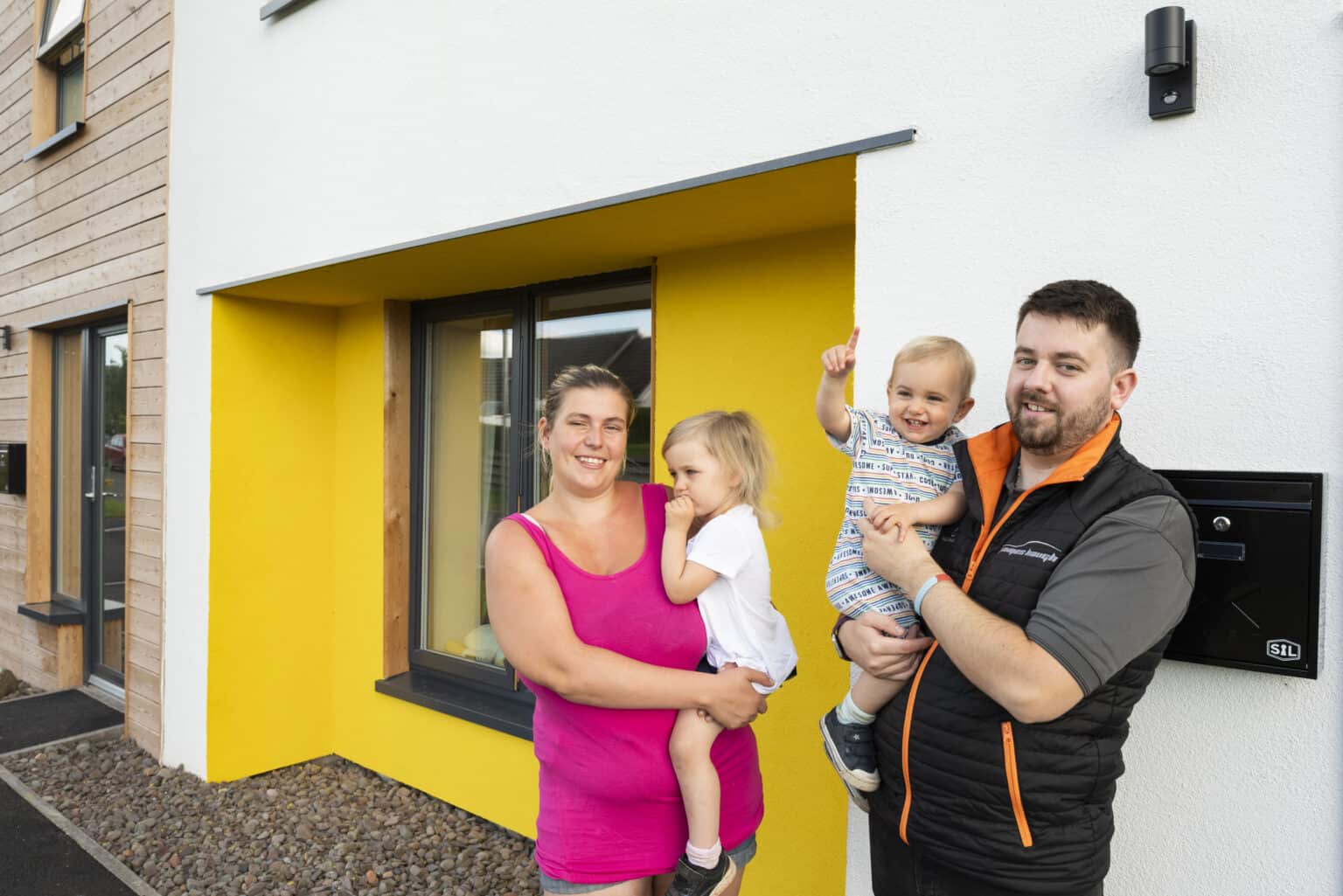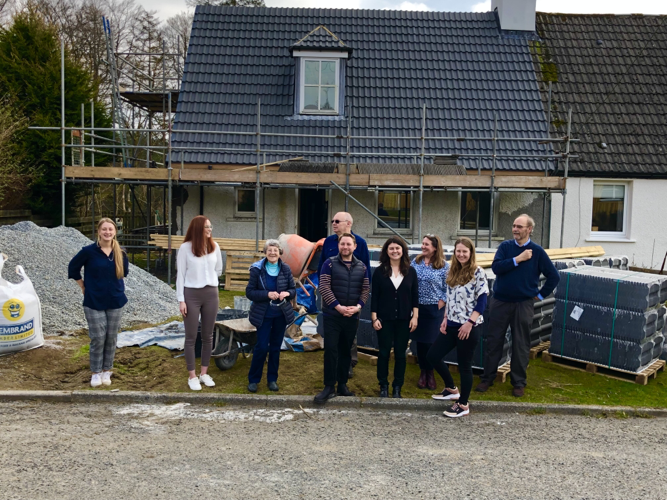Opinion: Helping reverse a mass exodus: community-led repopulation in rural areas

A family in the Closeburn development (Credit: Tom Manley)
Mike Staples and Ronnie MacRae reveal how community-led housing helps address repopulation challenges in Scottish communities.
Between 2009 and 2013, 40 people left the small Gaelic-speaking crofting community of Staffin in the north of Skye. This was a 6.6% population drop in four years.
The James Hutton Institute forecasts a quarter of the population of the North West Highlands and the Southern Uplands declining within the next 25 years, unless action is taken.
We know what the picture looks like across the country: young people unable to find suitable accommodation so being forced to leave their communities or unable to return after education (nearly half of all young people will be leaving the Highlands & Islands in the next five years, according to a new report by HIE. In the south of Scotland, the proportion of young and working-age people has been declining since 1992 and is projected to decrease significantly in the next seven years).
Likewise, families are unable to find housing, which removes working-age people from already stretched communities, leaving services and businesses struggling.
The demographics are crucial: with ageing population predictions across most areas of rural Scotland, we’re looking at diverging even more from thriving, diverse and self-sustaining communities.
So, faced with this depopulation and demographic crisis, what are communities doing about it?
Lots, in a word. They’re looking at the whole picture, tackling repopulation from a range of angles.
A short film about the feasibility stage of the Staffin project, part of a ‘routemap’ resource for community-led housing
No to one-size-fits-all
Firstly, there’s the need to tailor solutions to the specific needs of each community. Targeting exactly what’s needed in different rural and island communities means they can grow and adapt for the future in the ways they need to. For example, including more affordable family housing to keep young, working families in their hometowns (or help them return), including more homes with office space, or more adaptable homes to prevent people with additional or changing needs from having to leave.
Protecting housing stock for the future
Secondly there’s increasing the housing stock and protecting it for use by local communities. Without control over future sales or allocations, what’s to say the homes won’t become holiday or second homes? Applying tools such as allocation policies and the Rural Housing Burden means that the houses will be forever in use by people with a need to live or work in the area.
Lifelong homes with a range of tenures
Thirdly, having options of different affordable tenures is crucial, particularly in small communities.
With secure tenancy options, community-led homes give individuals and families opportunities to plan for a long-term future. And by promoting community connections and prioritising tenants with existing ties to the community (e.g., a job, nearby family, connections to local services or businesses), this model also helps with stability and diversity of a community.
Not just homes…
As ever, it’s not just homes that are needed. That’s something that communities are demonstrating in practice too. In terms of how Staffin dealt with their population loss, the Communities Housing Trust worked with Staffin Community Trust to provide a range of affordable homes, but also to improve access to services with a new NHS health centre, and improve opportunities for local businesses with commercial units and workshops. All this was achieved on a small site with partnership working.
Closeburn, Dumfries and Galloway, the Nith Valley Leaf Trust partnered with SOSCH to identify need for local, affordable family homes. The project introduced new, Passivhaus family homes across from the school, which had previously suffered from a decreasing roll. Three new families moved into the homes, all with young children, which helped sustain the school and teaching jobs. One of the families also runs a day-care business from their home, further increasing local service provision for families.

SOSCH and Glentrool & Bargrennan Development Trust in front of Glentrool homes under construction, Spring 2022
Similarly, in Glentrool, a remote and rural community at the heart of Galloway Forest Park, SOSCH has supported Glentrool & Bargrennan Community Trust to redevelop three empty homes into affordable family housing. This project has been delivered in conjunction with the development of a community-hub, creating local employment opportunities in a very remote location.
Community-led is the way to repopulate
An important aspect of repopulation agendas is creating great places that are attractive to live, work, play, and grow up and grow old in. We want everyone – politicians, local councillors, services and businesses, community organisations and residents – to see that community-led housing and development does just that. It complements other existing options such as housebuilding through councils or housing associations.
As depopulation is a major issue felt keenly in communities across the country and one of the Scottish Government’s critical policy challenges, both CHT and SOSCH, alongside our community partners, demonstrate there’s a proven solution in community-led development. In practice, this means enabling communities to make their own decisions and do what they do best: adapt, innovate, and create the best opportunities possible for their own futures. It’s not a theory, or just a nice idea on paper, but proven in practice. In the absence of other possibilities for many rural and island communities, and with funding support from the Scottish Government (such as the Rural & Islands Housing Fund), community-led provides strong outcomes and goes hand-in-hand with repopulation. We look forward to supporting many more communities thrive in as many ways as possible!
- Mike Staples is chief executive at South of Scotland Community Housing and Ronnie MacRae is chief executive at Communities Housing Trust.









